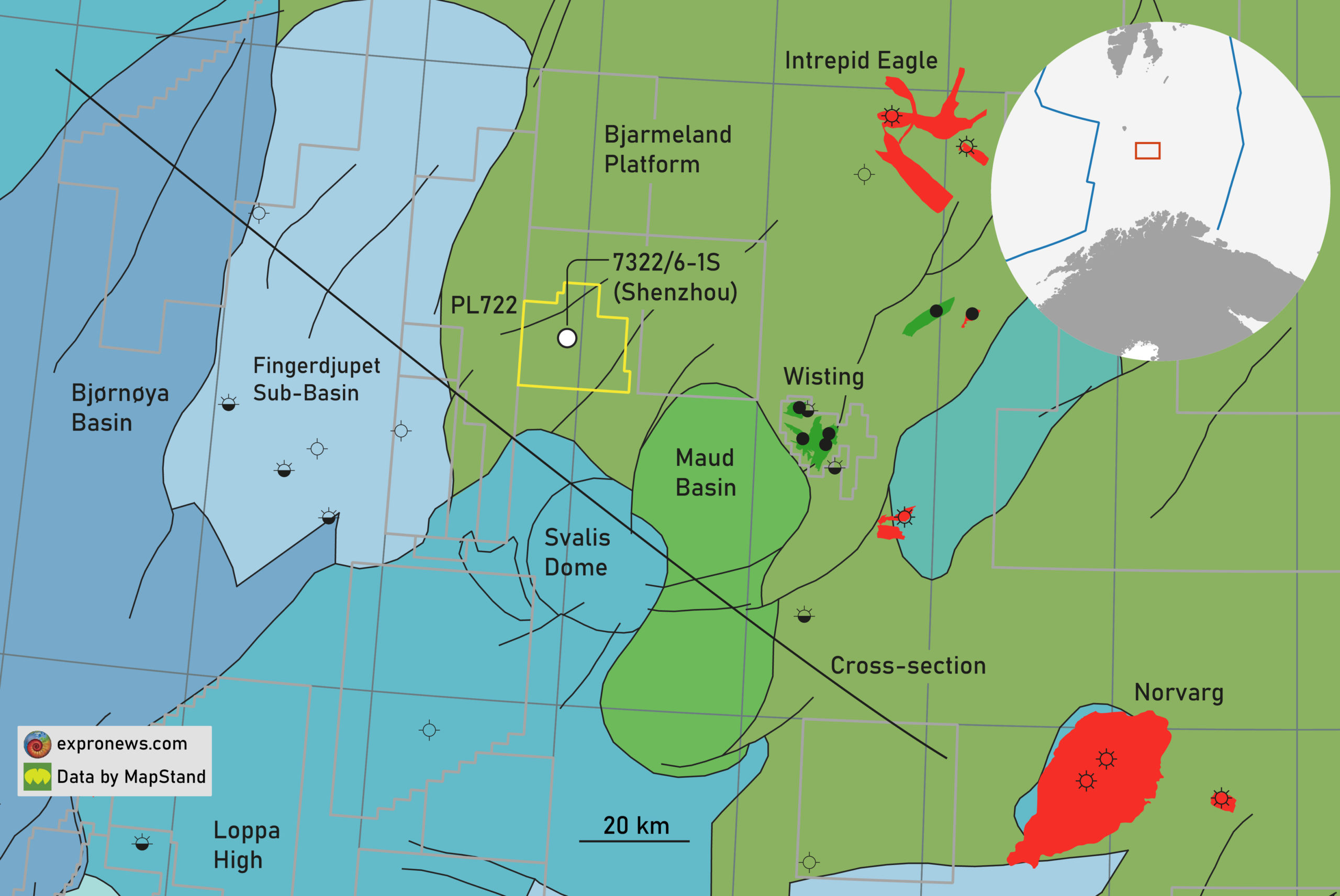The Barents Sea can do with a bit of success. Following an unsuccessful three-well campaign where the Spissa, Polmak and Bask exploration wells all turned out dry, the 7322/6-1S well can now turn the tide.
Equinor did prove oil in the meantime through drilling the 7220/7-4 (Isflak) well recently, but this well should be interpreted as an appraisal rather than an exploration well given the location in between two discoveries very close by.
A true exploration well
The 7322/6-1S well currently being drilled by operator Equinor and partners Aker BP (45%), Lundin Energy (20%) and Sval Energy (15%) in PL 722 is very much an exploration well. Located in an area of the Bjarmeland Platform that has not been explored before, the well certainly has the potential to spark renewed interest in the basin.
According to the Environment Agency, the main targets of the well are Triassic sandstones and carbonates of Permian age. Comparing this to the Wisting discovery further to the east, where Triassic and Jurassic sandstones form the main reservoirs, the targets in 7322/6-1S are probably deeper. This is supported by a regional cross-section below, which gives an impression of the structural setting of the area even though the line does not intersect the wells and fields discussed here.

The Wisting discovery is known to be very shallow, with the crest of the reservoir at a depth of 250 m below seabed. Looking at the Bjarmeland Platform where the 7322/6-1S well is currently being drilled, the Cretaceous is likely to be thicker. Combined with the fact that the Permian target is stratigraphically deeper than Wisting, the well is likely to be drilled to 2-3 km depth.
In terms of expected volumes, Aker BP’s estimate for Shenzhou ranges from 191 to 505 MMboe (as presented during the Capital Markets Update on the 4th February this year). Lundin’s estimate is within this range; the company estimates Shenzhou to contain around 360 MMboe (as presented during the Capital Markets Update on the 28th January this year).
A positive indication
In a LinkedIn post dedicated to the Shenzhou well last year, Lodve Berre from EMGS (now Innovation Manager at NTNU Technology Transfer AS) described Shenzhou as a potential play opener for the Snadd formation in the area. Even better, based on CSEM anomaly mapping and analysis it does look as if one of the Triassic target intervals may indeed be signalling the presence of hydrocarbons.
As Lodve put it in the article: “Although we do see an anomaly at target level, it does seem like the extent of the anomaly is significantly smaller than the target outline. With this in mind, along with the significant false positive risk, we are cautiously optimistic about this prospect and we update the chance of success slightly, while simultaneously reducing the expected volumes. If the well indeed proves to be hydrocarbon bearing, we are very exited about the additional prospectivity at the Snadd level in the area!”
Based on this, Shenzhou does have the potential to add (significant) volumes to the area, where Equinor has already awarded contracts for concept studies to further progress the 500 MMboe Wisting discovery.
HENK KOMBRINK




